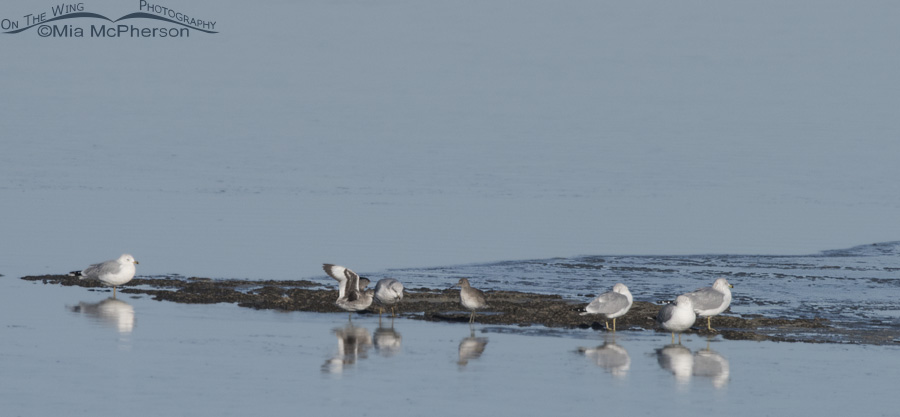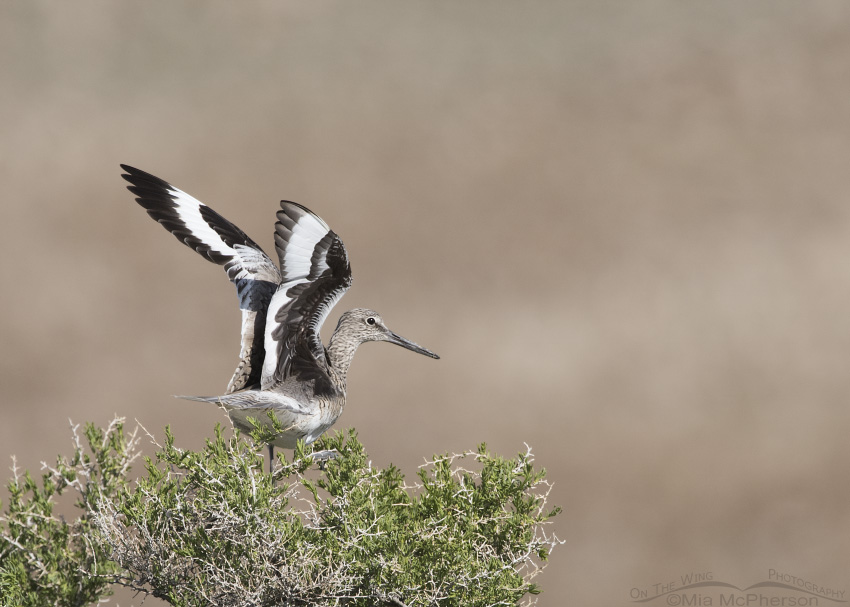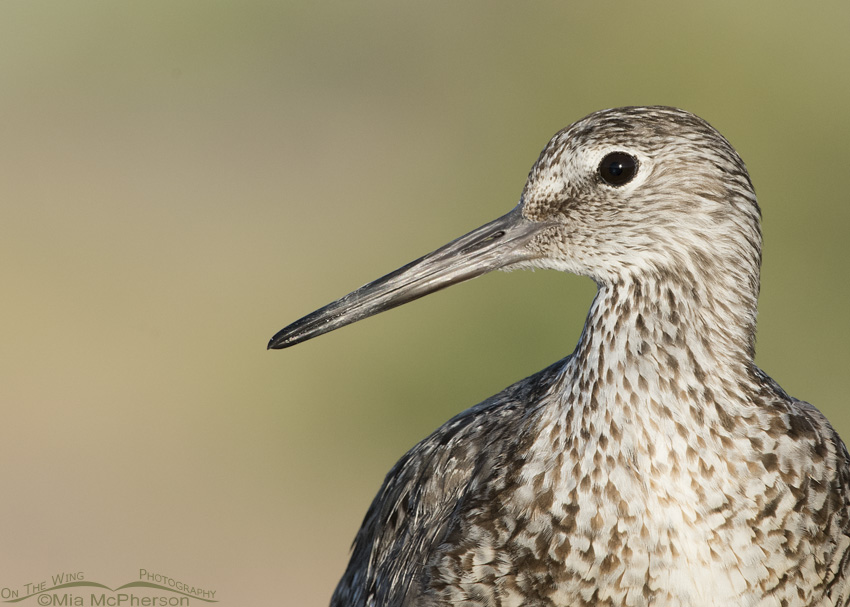 Two late migrating Willets on exposed bioherms – Nikon D810, f7.1, 1/4000, ISO 400, Nikkor 500mm VR with 1.4x TC, natural light
Two late migrating Willets on exposed bioherms – Nikon D810, f7.1, 1/4000, ISO 400, Nikkor 500mm VR with 1.4x TC, natural light
While looking for odd ducks on the Great Salt Lake yesterday I spotted two late migrating willets on what I thought was an exposed sandbar. These birds were a long way from the causeway to Antelope Island thus the poor quality of the image. I could easily make out the Ring-billed Gulls but for a bit I had a hard time identifying the other two drab, gray birds associating with them until one of them turned and flashed the wing pattern I know to be of a Willet.
At first I couldn’t believe I was seeing Willets this late in the year. But I had no doubt about my ID and took a series of images of them. Later I reported the sighting to eBird and and also checked on sightings from all years for November and December and it looked like there was only one later sighting in this area by David Wheeler on December 31, 1995.
I didn’t think about the exposed sandbar the two Willets were on until after I made my report to eBird. I looked carefully at the images and realized I was seeing exposed bioherms, or microbialites which are also known as “rocks that are alive”. These rocks are typically formed by bacteria in shallow hypersaline water like the Great Salt Lake.
I also found it interesting that the Salt Lake Tribune published an article yesterday about the bioherms and the low water of the Great Salt Lake that can give all of you far more information about them than I will write about here. Please read “Low water in Great Salt Lake reveals ‘rocks that are alive’“. I though it was fascinating!
 A Western Willet trying to regain its balance on a Greasewood – Nikon D810, f8, 1/1250, ISO 400, +0.3 EV, Nikkor 500mm VR with 1.4x TC, natural light
A Western Willet trying to regain its balance on a Greasewood – Nikon D810, f8, 1/1250, ISO 400, +0.3 EV, Nikkor 500mm VR with 1.4x TC, natural light
Okay, back to the late migrating Willets.
I should mention that the Willet with its wings up in the first image appeared to have a problem with one of its feet but that wouldn’t stop it from migrating unless it hasn’t been able to eat enough to get the energy needed for the migration. The other Willet walked normally. So, I don’t have a working theory about why these two Willets are still in northern Utah this late in the year.
Maybe our changing climate has or will have an impact on seeing Willets later in the year.
I posted the image above taken in May of this year to show the broad white wingstripe that helped me confirm the ID of the Willets I photographed yesterday. I was fairly certain of my ID and those white wingstripes clinched it.
 Portrait of a Western Willet – Nikon D810, f14, 1/400, ISO 500, Nikkor 500mm VR with 1.4x TC, natural light
Portrait of a Western Willet – Nikon D810, f14, 1/400, ISO 500, Nikkor 500mm VR with 1.4x TC, natural light
I probably won’t be seeing Willets again until late March or early April when they return to breed in the grasslands of northern Utah.
I hope the two Willets I found yesterday are able to continue migrating south to winter and will return to this area next spring.
Isn’t nature amazing?
Life is good.
Mia
Click here to see more of my Willet photos plus facts and information about this species.


Hi! have not been on line much lately but love all your photo’s and comments! Our birds are hiding for some reason?? I heard a Wren last week one day but even it is gone! May soon? Have a great day!! and shots! love ya mom
Amazing nature yes, but it can’t always adapt to environmental changes fast enough. I cannot believe how low The Great Salt Lake has become. I read in another Trib article (11/14) that older structures (microbialites) collapse and dry up as the water recedes, leaving domes along the shoreline. Utah is the second driest state and with all the population growth it is starting to show.
I like the shots and thanks for explaining bioherms. Thinking of late birds, i saw a Greater Yellowlegs ( I think) in mid October, hundreds of geese were here until the snow last week but then we got a good dump of 10 cm. andthe geese are gone. In a city park here in Alberta where I frequent, I saw my first Pine Grosbeaks but whenever they were trying to go to a certain fruit tree, they were chased off by a domineering Robin! Some do over-winter here in the ravines, but never seen them this late in this park.As well, someone spotted a White-throated sparrow yesterday, very rare for this time of year.
Hoping you are not right about the late migration but most likely you hit it on the nail. Unhealthy birds tend to linger unable to migrate with the rest.
Beautiful images Mia. Interesting about the Living Rocks.